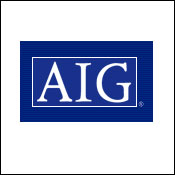 In the most stunning in a series of revelations that has rocked the U.S. business community, American International Group Inc. admitted yesterday to numerous and substantial accounting irregularities that could reduce its net worth by over $1.75 billion.
In the most stunning in a series of revelations that has rocked the U.S. business community, American International Group Inc. admitted yesterday to numerous and substantial accounting irregularities that could reduce its net worth by over $1.75 billion.
Moreover, the company’s accountants — PriceWaterhouseCoopers — received a subpoena for documents relating to the probe.
AIG, the largest insurance company in the U.S., admitted transactions that “appear to have been structured for the sole or primary purpose of accomplishing a desired accounting result.”
The company’s statement listed eight areas in which an ongoing internal review has identified accounting mistakes. The statement specifically declared as improper the treatment of a deal with General Re Insurance Corp., a unit of Warren Buffett’s Berkshire Hathaway Inc., that has been at the center of the probe since it began.
To make matters worse, state and federal investigators believe that the full extent of AIG’s accounting improprieties over the past decade are even larger. According to unnamed sources within the government’s investigation units, the investigations have already uncovered a pattern of alleged misconduct in regard to the business transactions that will likely prompt criminal prosecutions against the individuals responsible for the transactions.
The Lord of Regulation was pleased with AIG’s public admissions. “The board’s decision to provide this information represents a welcome step toward transparency and accountability as our investigation proceeds,” said the Lord’s spokesman.
The market is clearly worried by AIG’s mounting problems. Yesterday, during a broad stock-market rally, AIG’s shares fell almost 2% to $57.16, continuing a slide that began in mid-February after disclosure of the governmental probes. Since that time, AIG shares are down 22% since closing at $73.12 on Friday, Feb. 11. Perhaps even more importantly, Standard & Poor’s yesterday downgraded AIG’s long-term bonds and certain other debt by a notch from its top AAA rating.
Given these latest developments. the question of the moment is whether AIG is headed for an Enronesque meltdown.
Financially, it would appear that such a meltdown is unlikely. In 2004, AIG reported net income of over $11 billion on revenue of about $98.5 billion. Consequently, the accounting problems identified to date probably will not deplete shareholders’ equity by more than about 2%, which would leave the company’s net worth above $80 billion. That’s not chump change.
However, the reason that Enron collapsed is that Enron’s business-model — as does AIG’s — requires its customers to rely on the company’s financial integrity and not necessarily the company’s net worth.
Accordingly, when customer confidence in a company such as Enron or AIG is undermined, participants in those companies’ markets become less willing to engage in the purchase or sale of long-term contracts that might not be fulfilled. Thus, as the “bid-ask” spreads on Enron’s trading contracts diverged in late 2001, Enron’s markets unraveled and Enron’s formerly profitable trading business collapsed.
Enron and AIG’s business models are quite similar to that of a bank. Banks take in money from depositors on a short-term basis and then loan it out on a long-term basis. The bank only keeps a small fraction of its assets available as working capital.
Consequently, as sometimes happens, if too many depositors try to withdraw funds from a bank (i.e., a “run on the bank”), then the bank will not have adequate cash on hand to pay them their withdrawals and the customers will be have to be turned away.
So what prevents a run on the bank? Beyond federal deposit insurance, the only thing that really prevents the run on the bank is that the bank’s depositors trust that the bank will be able to fulfill their demands for withdrawals. Stated another way, the bank will fail when its depositors stop trusting the bank.
That’s one of the reasons why banks traditionally have built huge and impressive bank lobbies and offices to advertise the strength of the bank’s assets and its concurrent financial integrity. Enron followed that example in building the Enron office tower in downtown Houston, and AIG’s New York building is equally impressive.
However, regardless of the financial soundness of any bank, when its depositors stop believing in the financial integrity of the bank, the bank will fail.
Life insurance companies such as AIG operate in much the same way. Insureds deposit money with a life insurance company for years and build up equity. However, if the insurance company fails (as they sometimes do), then the investment is lost.
Thus, customers rationally hesitate to use a life insurance company that is not financially solid, and insurance companies attempt to fulfill that customer expectation regarding their financial stability through public accounting, by building enormous offices, and by advertising themselves as bastions of stability. In that regard, governmental regulation of companies in the life insurance and banking industries help those industries by reducing the public’s fear of hidden financial problems.
Enron was similar to a bank or life insurance company because Enron’s largest business was in natural gas contracts. Inasmuch as Enron created the long-term natural gas market, Enron became the market maker for such contracts and, thus, offered to buy or sell long-term natural gas contracts in that market.
That raises an important attribute of Enron’s business that led to its downfall — Enron was a party to every transaction in its trading business. That is, buyers and sellers did not contract with each other, but with Enron. Thus, every company that conducted trading business with Enron had credit exposure to Enron and, as a result, a big part of the value placed on a contract depended on Enron’s creditworthiness. This exposure is greater in long-term contracts, particularly for buyers who prepaid some or all of the contract.
Therefore, as the revelations of Enron’s accounting problems began to emerge in late 2001, buyers of such contracts from Enron began to bid lower — the value of a contract fell with the increased risk.
On the other hand, sellers of contracts began to demand a higher price from Enron because of the increased risk that the contract might not be fully consummated.
Moreover, the foregoing process was not limited to Enron’s natural gas trading market. It also occurred in regard to electricity, plastics, chemicals, metals, oil, fertilizers, coal, freight, tradable emissions (pollution) permits, lumber, steel, and other markets that Enron had created.
Almost overnight, Enron’s profit margins in its trading business diminished dramatically or disappeared completely, and that process ultimately led to the implosion of Enron’s trading markets.
Consequently, accounting improprieties are unlikely, in and of themselves, to lead to AIG’s collapse. By way of comparison, bad accounting alone would not have brought down Enron.
However, bad accounting can undermine the business customers’ trust in AIG’s financial integrity, and the disappearance of that trust in the marketplace can cause AIG’s business to decline dramatically or, in the worst of all scenarios, collapse completely. That lack of trust is what truly brought Enron down, and AIG needs to be concerned with that same dynamic.
Like this:
Like Loading...
 Don’t miss this Wall Street Journal ($) editorial today, which addresses the same issue that many of these earlier posts address in regard to the Lord of Regulation‘s ongoing public flogging of American International Group, Inc. and its former chairman and CEO, Maurice “Hank” Greenberg:
Don’t miss this Wall Street Journal ($) editorial today, which addresses the same issue that many of these earlier posts address in regard to the Lord of Regulation‘s ongoing public flogging of American International Group, Inc. and its former chairman and CEO, Maurice “Hank” Greenberg:


 In the wake of almost unprecedented negative publicity — much of which has been flamed by prosecutors pursuing him — Mr. Lay is facing the prospect of spending much of the remainder of his life in jail. The same is probably true for Mr. Greenberg.
In the wake of almost unprecedented negative publicity — much of which has been flamed by prosecutors pursuing him — Mr. Lay is facing the prospect of spending much of the remainder of his life in jail. The same is probably true for Mr. Greenberg.
 The Wall Street Journal’s ($) Washington Wire reports today that Michael Jackson’s 72% negative rating dwarfs his 5% positive rating, and that those numbers are worse than those of O.J. Simpson.
The Wall Street Journal’s ($) Washington Wire reports today that Michael Jackson’s 72% negative rating dwarfs his 5% positive rating, and that those numbers are worse than those of O.J. Simpson.



